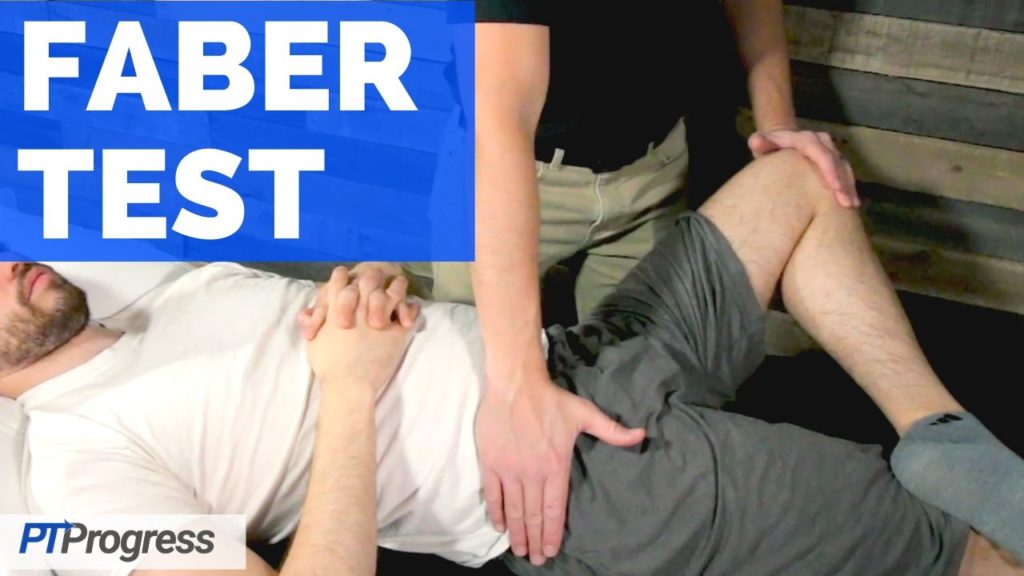
The FABER test is used to identify the presence of sacroiliac joint dysfunction or SI joint dysfunction. It’s one of the most commonly used provocation tests of the hip.
How to Perform FABER Test
Position of Patient: The patient should be relaxed in the supine position as the examiner flexes the patient’s knee to 90 degrees, resting their foot on their opposite knee.
Performance: The examiner will place their hand on the patient’s opposite iliac crest in order to stabilize the hip. On the side to be tested, the examiner will abduct, externally rotate, and apply a posterior force against the knee to check for pain or end range restriction. These motions are easy to remember as the name FABER is a quick reference of the motions involved in the test: “Flexion, ABduction, and External Rotation”.
How to Interpret FABER Test
Positive Finding: A positive FABER test will occur if pain is reproduced or discomfort and ROM limitation is noted. Symptoms along the groin may lead the examiner to perform or to order more specific tests to rule out muscular strain, impingement, arthritis or other hip pathology.
Test Accuracy / Reliability / Evidence:
Intraexaminer κ = .63 (.43, .83)
Source: Martin RL, and Sekiya JK: The interrater reliability of 4 clinical tests used to assess individuals with musculoskeletal hip pain. J Orthop Sports Phys Ther 2008; 38: pp. 71-77

